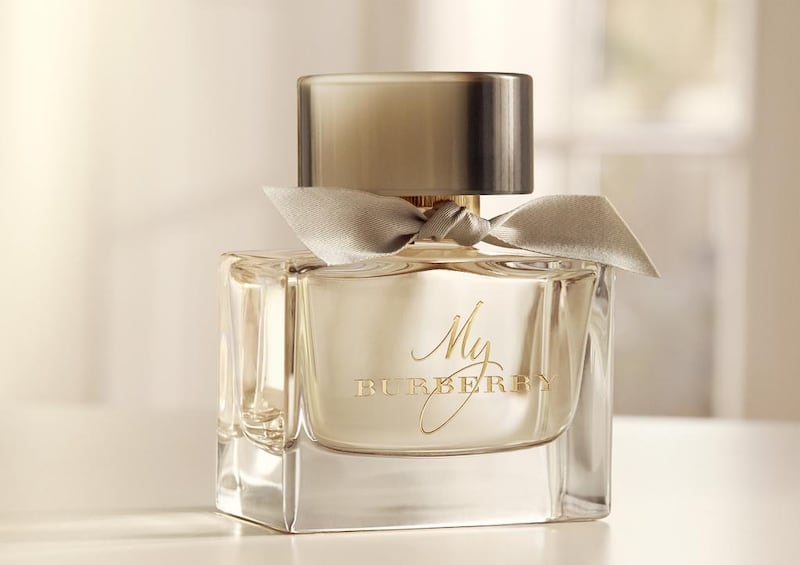Francis Kurkdjian refuses to be cast as the tortured artist. As one of the world’s leading perfumers, or noses, he transforms ideas into fragrances, essentially turning the intangible into the tangible. But he is quite adamant: perfume is not art, and the creative process doesn’t need to be painful.
“I decided years ago that if the process was painful, then something was wrong. I believe, at least for myself, that if my creative process is painful, the perfume will keep that in its DNA somehow, and in the end, the result won’t be right.
“It’s a very romantic vision of creation — the tortured artist — but perfume is not art. You can have an artistic touch doing it, but it is not an art. Even if you try to infuse it with uniqueness and creativity, at the end of the day, perfume is a commercial product.”
Over the course of his 20-year career, Kurkdjian has created fragrances for every brand worth its salt — or scent. He is the man behind Narciso Rodriguez’s For Her and For Him; Elie Saab’s Le Parfum; Dior’s Cologne Blanche and Eau Noire; Giorgio Armani’s Armani Mania; Davidoff’s Silver Shadow; and many, many more.
So it seems only natural that when Burberry was looking to develop its signature My Burberry fragrance, it would go knocking on Kurkdjian’s lab door. He has developed three fragrances for the My Burberry family since 2013: an eau de parfum made famous by an advertising campaign shot by Mario Testino featuring Cara Delevingne and Kate Moss together for the first time; an eau de toilette; and a special festive edition that was unveiled at the end of last year.
The Kate/Cara tie-up was a stroke of marketing genius — there’s their relaxed confidence and very particular breed of Britishness, of course, but the image also conveys an idea of timelessness and transmission, which links back to the concept of that quintessential Burberry icon, the trench coat, being passed on from one generation to the next.
As is to be expected, the trench was a central piece of inspiration for the fragrances. Even the name speaks of how people affectionately refer to this fashion favourite not as “my coat” or “my trench” but as “my Burberry”. Then there’s the bottle, which has a hand-tied, English-woven knot made from gaberdine, the authentic trench fabric, around its neck.
The process all started with a very clear image: that of a woman wearing a honey-coloured Burberry trench coat, in a London garden, after the rain. For the My Burberry Eau de Parfum, Kurkdjian translated this image into a scent featuring top notes of bergamot and sweet pea, heart notes of geranium leaf (which are an unexpectedly masculine note in a very feminine fragrance, but are another nod to that aforementioned Britishness), and base notes of damask and centifolia roses, with a trace of patchouli.
This year will see the unveiling of the brand's first fragrance for men, as well as a new addition to the My Burberry family, My Burberry Black, which will be launched exclusively in Harrods and on Harrods.com in February 2016. And then, as an indication of how important the Middle East market has become, and of how well-suited the new scent is to this region's tastes, My Burberry Black will be rolled out in the Middle East starting from May, well before its international release in September.
For My Burberry Black, the inspiration, and scent, were tweaked. We are back in the garden in London, but this time, it’s after nightfall, and the woman is wearing a black trench coat. There is an increased sense of mystery and sensuality, which Kurkdjian captured by “pumping up the volume of the whole fragrance”. The sweet peas have been turned into sun-drenched jasmine flowers; the freshly cut roses have become candied roses; and notes of vanilla and amber have been introduced.
But how exactly does one convert an image, or a feeling, into a scent, I ask Kurkdjian when we meet in the Burberry store in Dubai’s Mall of the Emirates. “I always say that the inspiration has to be strong enough to evoke itself as a scent,” he says.
After two decades in the business, the process is now largely intuitive for the perfumer, occurring almost automatically somewhere in the recesses of his mind. “I’ve built up my technique over the years so I don’t have to think about it too much.”
He likens the process of producing perfume — creating constant variation from a finite number of ingredients — to composing music. He himself is a piano player, so this is an apt metaphor. “The palette of ingredients is always the same. But it’s like when you think about music as a palette of sounds. It’s always the same sounds, but you can go from Bach to Mozart to Elton John. You still have the same keyboard, so how can you keep creating new things?”
The secret, he says, is crafting something that is of its time. “The world is always evolving — I’m not saying in the right or wrong direction, but the world today is not like it was yesterday, and tomorrow it will be something different. Perfume is a total reflection of the world and, when you create today, it has to be a reflection of today.
“If a fragrance doesn’t do well now, there is no chance that in 20 years’ time you’ll pull it out of a drawer and claim that it is something incredible. Again, it is not like art. With perfume, if it is not of its time, there is no chance it can become a classic. There has to be uniqueness, something that you haven’t smelled before and that is different enough to stand out from the masses.”
And yet, it’s a very fine line. As Kurkdjian points out, when it comes to fragrances, tastes tend to evolve at a glacial pace. Don’t be fooled by the ever-increasing number of products on the market, or the fact that perfume has become a mainstay of many people’s beauty routines in most parts of the globe. In actual fact, it takes a long time for the average person to become accustomed to new types of smells. Kurkdjian attributes this, in part, to the fact that smell is intrinsically linked to bodily integrity and health.
“The reason that we smell things before we eat them is because our eyes can’t tell if something is good or bad for you. But when you smell something rotten, your nose tells you straight away not to eat it. Your body says: ‘Danger.’”
So it can take decades for the public to adapt to new styles of scents. “Newness in perfume is something that you build step by step,” says Kurkdjian. “It can take up to 20 years to build a massive trend. For example, what we see now with [Lancome’s] La Vie Est Belle started 20 years ago with [Thierry Mugler’s] Angel. In Angel, what you have as a canvas pattern is 20 per cent patchouli and 0.3 per cent of that sweet note that you now see everywhere; 20 years later, you have less than 3 per cent patchouli, so maybe 10 times less than before, and maybe 10 times more of that sweet note. So it took about 20 years to change that.”
In an increasingly globalised market, there are also cultural variations to contend with. How people respond to certain smells can be extremely specific to where they are from. This part of the world is an excellent case in point.
“As soon as I stepped off the plane two nights ago, I could tell I was in the Middle East — the smells were so powerful, ambery, dry, and there was all that oud,” says Kurkdjian.
And just as perfume must be of its time, it can also serve as a social and cultural marker. “This is a funny thing about this region. On a common life basis, there is the separation of genders, but on the perfume side, it is totally reversed. There is no distinction of what a man should wear and what a woman should wear. That was the way it was in Europe back in the 18th century. We could have a huge debate on how the perfume culture will evolve as women begin to play more and more prominent roles in these societies. It will be interesting to see if we will have the same shift in perfumes as we did in the 19th century in Europe.”
Either way, the region’s love affair with perfume is a strong and persistent one, and it shows little sign of abating.
“There is a real interest in perfume; a real cultural love of perfume. It’s very close to what the French have. The expression of it and how this is translated is different, but the core of it is the same.”
For more information, visit www.burberry.com.
sdenman@thenational.ae






